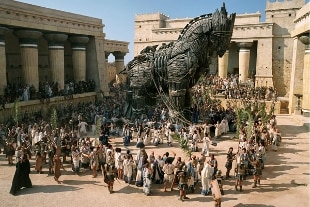Share
September 27, 2017"It cannot be said with absolute certainty that Hector and Achilles lived their rivalry here, but when you turn around these ruins for years, you perceive the presence of these characters". With these words Rustem Aslan, archaeologist at the head of the Troy excavation in the province of Canakkale, on the Aegean coast of Turkey, describes the sensations he feels when he moves around the site. An excavation with ruins dating back to a period prior to 3,000 BC, which includes 10 cities, all with the name of Troy, but numbered in a progressive manner.
The city core whose destruction was narrated by Homer
A site that the German archaeologist Heinrich Schliemann identified at the end of the nineteenth century, as extensive as it was delicate, which has suffered in recent years due to structural deficiencies, but which now has an opportunity to revive with the last excavation, which concerns the south gate of the city of Troy VI, a settlement dated 1300 BC Here, new buildings and a road have come to light. Waiting for the excavation to throw light on this new discovery, Aslan's theory is that it is the city nucleus whose destruction was narrated by Homer in the Iliad. Aslan's research did not leave the Turkish Ministry of Culture indifferent, declaring 2018 the year of Troy.
"The excavation will resume as soon as possible in a very large area. The goal is to understand if Homer drew inspiration from what happened right here."The archaeologist's statements were followed by the announcement that a "model" of the famous horse will be rebuilt, but above all that a museum will open next year to show the wonders of the "treasure of Priam", brought by Schliemann to Berlin before the siege of the Red Army, at the end of the Second World War, diverted them to Moscow, which recently decided to return them to Turkey.
Aeneas was also a refugee
Waiting for the wonders of Priam's treasure to be exposed and for new certainties to emerge about what was the fate of Troy, visitors can stop in front of the walls and imagine the moment of the duel between Hector and Achilles or other moments of the Homeric epic. However, according to Aslan, the excavations of Troy have something to teach, even at the present time: "What emerges is the destruction and violence of the war. Sometimes, after a day of excavation, I think of the destruction of the war in Syria. After all, Aeneas was also a refugee, who fled the war exactly as it does today. "

